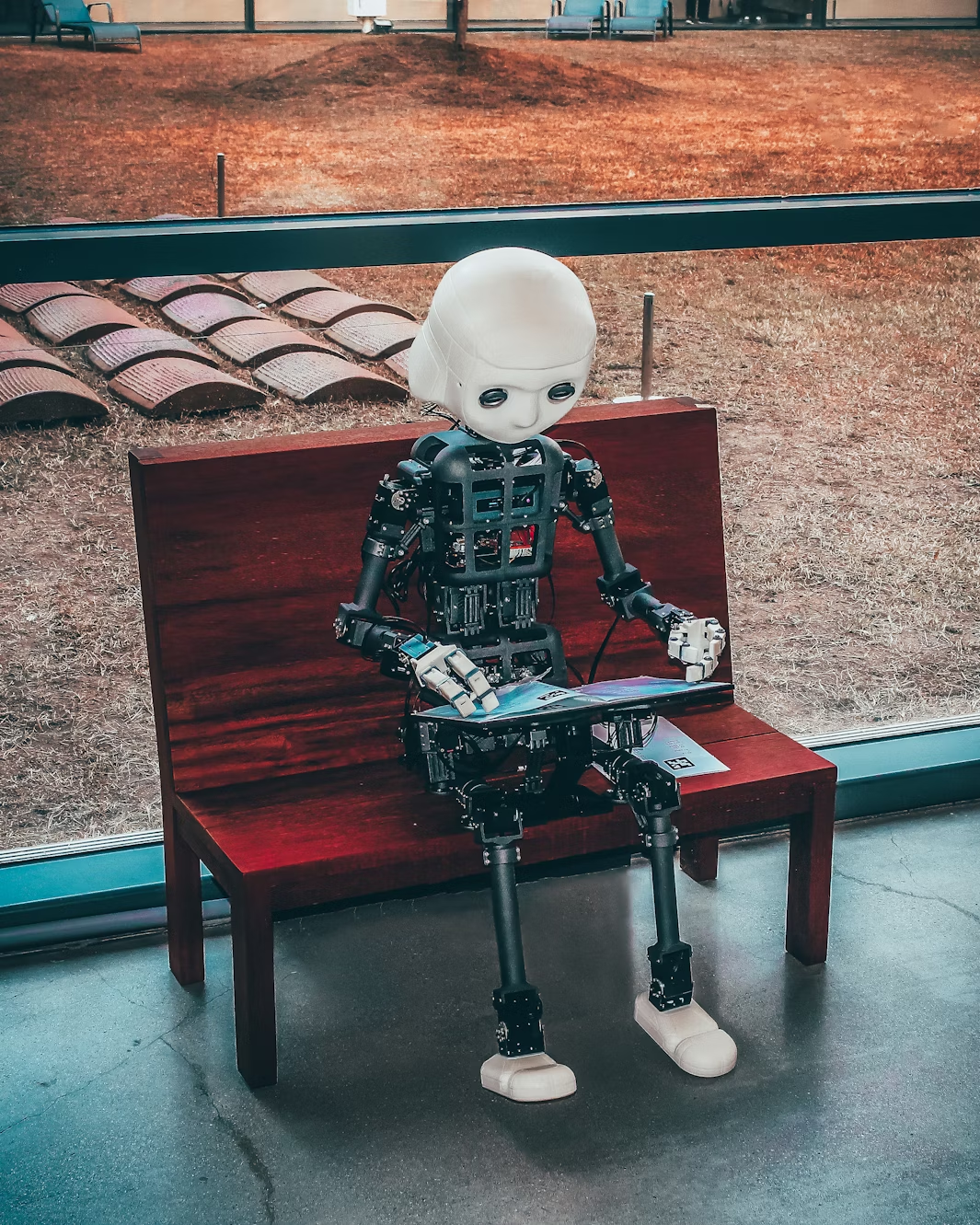The Hard Truth About Coding Blogs in 2025
The golden era of technical blogging is over. After nearly two decades of dominance, traditional coding blogs are facing an existential crisis that goes far beyond simple market saturation. The convergence of AI-generated content, algorithm changes, and shifting audience consumption habits has created a perfect storm that’s leaving even veteran technical writers questioning the viability of their craft.
If you’re a developer considering starting a blog in 2025, or an established blogger watching your traffic plummet, this isn’t the doom-and-gloom article you might expect. Instead, it’s a roadmap for what comes next—and why the smartest developers are already pivoting to more effective content strategies.
The Death Spiral: Why Traditional Coding Blogs Are Failing
AI Content Flooding the Market
The technical writing landscape has been fundamentally altered by AI. According to recent analysis, the market is now saturated with AI-generated tutorials, how-to guides, and technical explanations that can be produced in minutes rather than the days or weeks that human-written content traditionally required.
As technical writer Shalitha Suranga notes in his analysis for Level Up Coding, “In the past, programmers spent days and even weeks completing a detailed, helpful technical article with in-depth explanations.” Today, AI can generate similar content in seconds, creating an oversupply that’s driving down the value of traditional technical content.
The Algorithm Apocalypse
Google’s algorithm updates have been particularly brutal to technical blogs. Many established coding blogs have seen their organic traffic drop by 50-80% as search engines increasingly favor:
- Interactive content and demos
- Video-based tutorials
- Real-time community discussions
- Official documentation over third-party explanations
The days when a well-written tutorial could reliably capture search traffic are largely over. SEO for technical content now requires resources and strategies that individual bloggers simply cannot compete with.
Audience Attention Shift
Modern developers consume content differently than they did even five years ago:
- 91% of companies now use video in their marketing mix
- Short-form content on platforms like TikTok and Instagram dominates attention spans
- Interactive learning through platforms like Codepen, Replit, and Figma has replaced static tutorials
- Community-driven learning on Discord, Reddit, and specialized forums provides real-time help
As content strategist Ryan Robinson observes, “The reality is that most people now read less, watch more videos & listen to more podcasts.” For technical content, this shift is even more pronounced.
What’s Actually Working: The New Content Landscape
1. Video-First Development Content
The most successful technical content creators have embraced a video-first approach:
YouTube Tutorials: Channels showing real coding sessions, debugging processes, and project builds consistently outperform written tutorials.
Live Coding Streams: Platforms like Twitch and YouTube Live allow developers to build audiences while actually coding.
Short-Form Educational Content: 60-90 second explanations of coding concepts on TikTok and Instagram Reels are reaching audiences that would never read a blog post.
Success Example: Developers like Fireship have built massive followings by condensing complex topics into engaging, fast-paced video content.
2. Interactive Learning Platforms
Rather than explaining code, successful developers are creating platforms where people can actually practice:
Code Playgrounds: Tools like Codepen, JSFiddle, and Replit templates that let users experiment with concepts immediately.
Interactive Tutorials: Platforms that combine explanation with hands-on coding practice.
GitHub Templates: Starter repositories that developers can fork and modify, learning by doing rather than reading.
3. Community-Centric Platforms
The most valuable technical content now happens in communities:
Discord Servers: Real-time help, code reviews, and collaborative learning.
Developer Forums: Specialized communities around specific technologies or frameworks.
Newsletter Communities: Curated content with engaged subscriber bases who actually read and respond.
Open Source Contributions: Contributing to documentation, creating useful tools, and solving real problems for other developers.
4. Product-Focused Content
Instead of generic tutorials, successful developers are building content around specific problems:
Developer Tools: Creating tools that solve actual developer pain points.
SaaS for Developers: Building products that developers need and documenting the journey.
API Documentation: Comprehensive, well-designed documentation that becomes the go-to resource for specific technologies.
Case Studies: Real-world problem-solving content that shows the entire development process.
The Ryan Robinson Strategy: Multi-Format Content Creation
Content strategist Ryan Robinson advocates for what he calls a “video-first creation process” that can be adapted for technical content:
Start with Video
Create a video explanation, tutorial, or coding session first. This forces you to:
- Organize your thoughts clearly
- Demonstrate concepts visually
- Capture authentic problem-solving processes
- Build a personal connection with your audience
Repurpose with AI
Use AI tools to transform your video content into:
- Blog post drafts
- Social media snippets
- Email newsletter content
- Documentation formats
Build Community
Don’t just publish content—create spaces where your audience can interact:
- Discord servers for real-time discussion
- GitHub repositories for collaborative coding
- Email lists for deeper, ongoing relationships
What Developers Should Build Instead
1. Developer-Focused SaaS Tools
The most successful “content creators” in the developer space are often building tools that solve real problems:
Examples:
- Debugging tools
- Code formatting utilities
- API testing platforms
- Development workflow automation
2. Educational Platforms
Instead of writing about coding, create platforms that teach coding:
Interactive Course Platforms: Build curriculum around specific technologies.
Code Challenge Sites: Create programming puzzles and challenges.
Learning Management Systems: Tools specifically designed for technical education.
3. Developer Community Platforms
The future belongs to community builders:
Niche Communities: Forums or Discord servers around specific technologies.
Mentorship Platforms: Connecting experienced developers with beginners.
Code Review Services: Platforms that facilitate learning through code review.
4. Content Automation Tools
Help other developers with their content creation:
Documentation Generators: Tools that create documentation from code.
Tutorial Creation Tools: Platforms that help developers create and share tutorials.
Code-to-Content Platforms: Services that turn code into explanatory content.
The AI Transition Strategy
Rather than fighting AI, successful developers are learning to work with it:
Use AI as a Productivity Multiplier
- Generate first drafts that you can refine and personalize
- Create multiple content formats from single ideas
- Automate repetitive content creation tasks
Focus on What AI Can’t Do
- Personal experience and unique insights
- Real-time problem solving and debugging
- Building genuine community relationships
- Creating innovative tools and solutions
Combine Human Creativity with AI Efficiency
The most successful approach combines human expertise with AI capabilities:
- Use AI for content production
- Apply human judgment for strategy and quality
- Focus human effort on community building and innovation
Platform-Specific Strategies
YouTube and Video Platforms
What Works:
- Screen recording with clear explanations
- Project-based tutorials showing complete builds
- “Debug with me” style content
- Technology deep dives and comparisons
Success Metrics:
- Subscriber growth
- Watch time retention
- Comment engagement
- Community building
TikTok and Short-Form Content
What Works:
- 60-second coding tips
- Before/after code improvements
- Quick tool demonstrations
- Developer humor and relatable content
GitHub and Code Platforms
What Works:
- Useful libraries and tools
- Comprehensive documentation
- Educational repositories
- Open source contributions
Newsletter and Email
What Works:
- Curated weekly technical insights
- Career advice for developers
- Deep dives into industry trends
- Exclusive content and early access
The Economics of Modern Developer Content
Revenue Models That Work
Tool Sales: Building and selling developer tools Course Sales: Creating comprehensive learning materials Consulting: Leveraging expertise for client work Sponsorships: Partnering with relevant companies Community Subscriptions: Premium access to communities or content
Revenue Models That Don’t Work
Display Advertising: Traditional blog monetization is largely dead Affiliate Marketing: Oversaturated and low-converting Generic Courses: Too much competition from free alternatives
Building Your 2025 Content Strategy
Step 1: Audit Your Current Approach
- Analyze your existing content performance
- Identify what’s working and what isn’t
- Understand where your audience actually spends time
Step 2: Choose Your Primary Format
Based on the research, prioritize:
- Video content (YouTube, TikTok, Instagram)
- Interactive tools and platforms
- Community building
- Product creation
Step 3: Develop a Multi-Platform Presence
- Start with one platform and master it
- Repurpose content across multiple formats
- Build email lists for direct audience access
- Create tools that solve real problems
Step 4: Focus on Community
- Build genuine relationships with your audience
- Create spaces for ongoing interaction
- Provide real value, not just content
- Listen to feedback and iterate
The Future of Developer Content
What’s Coming Next
AI-Assisted Development: Content that helps developers work with AI tools more effectively.
No-Code/Low-Code Education: As development becomes more accessible, there’s demand for content that bridges technical and non-technical audiences.
Real-Time Collaboration: Tools and content focused on remote development collaboration.
Developer Experience (DX): Content focused on improving the developer experience rather than just teaching code.
Skills to Develop
Video Production: Basic video editing and presentation skills.
Community Management: Building and nurturing online communities.
Product Development: Creating tools that solve real problems.
AI Collaboration: Learning to work effectively with AI tools.
Cross-Platform Thinking: Understanding how content works across different platforms and formats.
The Opportunity in the Crisis
While traditional coding blogs are dying, the overall demand for technical education and developer resources has never been higher. The shift represents an opportunity for developers who are willing to adapt their approach.
The key is understanding that successful content creation in 2025 isn’t about writing better blog posts—it’s about building better relationships, creating more valuable tools, and providing experiences that genuinely help other developers succeed.
Success Stories
Fireship: Transformed from traditional tutorials to fast-paced, entertaining video content that explains complex topics in minutes.
Syntax.fm: Built a successful podcast and community around web development.
GitHub: Became the go-to platform by focusing on tools rather than content.
Discord Communities: Thriving real-time communities around specific technologies.
Taking Action: Your Next Steps
For Existing Bloggers
- Pivot to Video: Start creating video versions of your best content
- Build Community: Create Discord servers or email lists around your expertise
- Develop Tools: Turn your knowledge into useful tools for other developers
- Collaborate: Partner with other creators and companies
For New Content Creators
- Skip the Blog: Start with video content or tool creation
- Pick a Niche: Focus on specific technologies or problems
- Engage in Communities: Participate in existing communities before building your own
- Solve Real Problems: Create content that addresses actual developer pain points
For Companies
- Invest in Video: Allocate resources to video content creation
- Build Developer Communities: Create spaces for your users to connect
- Open Source: Contribute tools and resources back to the community
- Sponsor Creators: Partner with successful content creators in your space
Conclusion: Adapt or Become Irrelevant
The death of traditional coding blogs isn’t a tragedy—it’s an evolution. The developers who recognize this shift and adapt their content strategies accordingly will find more engaged audiences, better monetization opportunities, and greater impact than ever before.
The question isn’t whether coding blogs are dying (they are), but whether you’re prepared to build what comes next. The future belongs to developers who can combine technical expertise with modern content formats, community building, and genuine value creation.
Start building that future today. Your audience is waiting—they’re just not reading blogs anymore.
What’s your experience with technical content creation? Are you seeing the shift away from traditional blogs in your field? Share your thoughts and strategies in the comments below.



